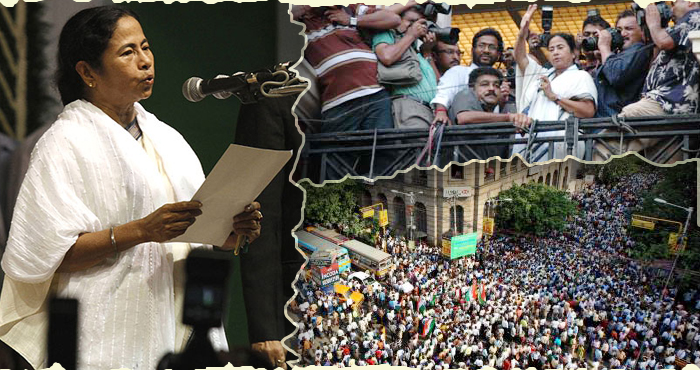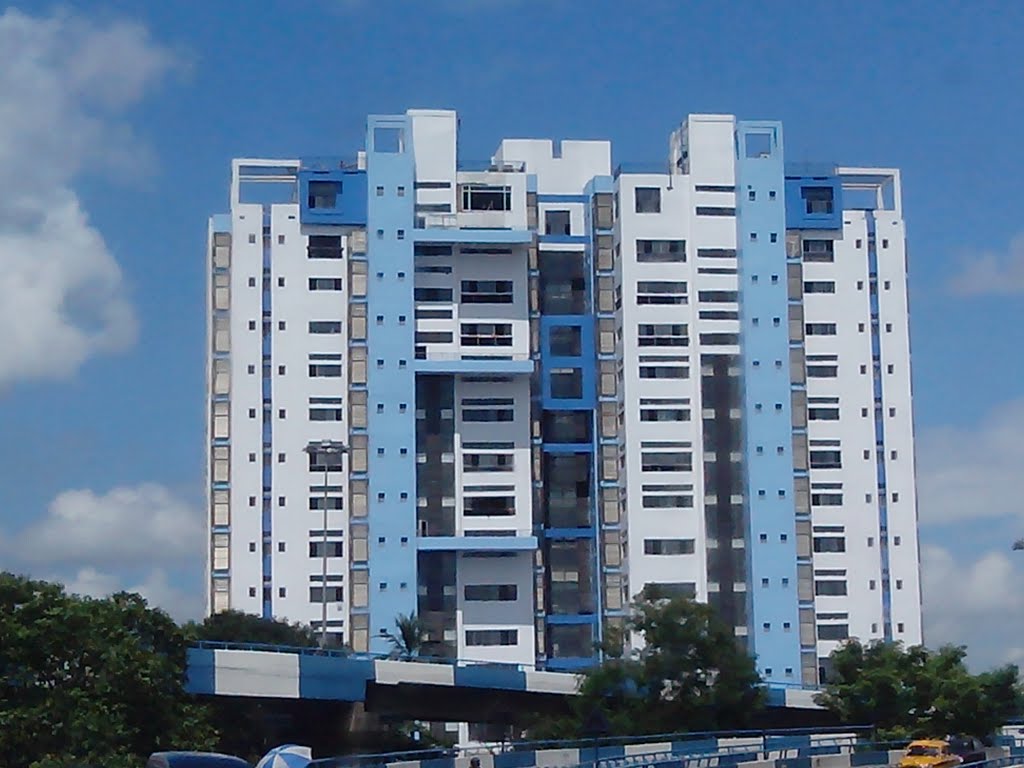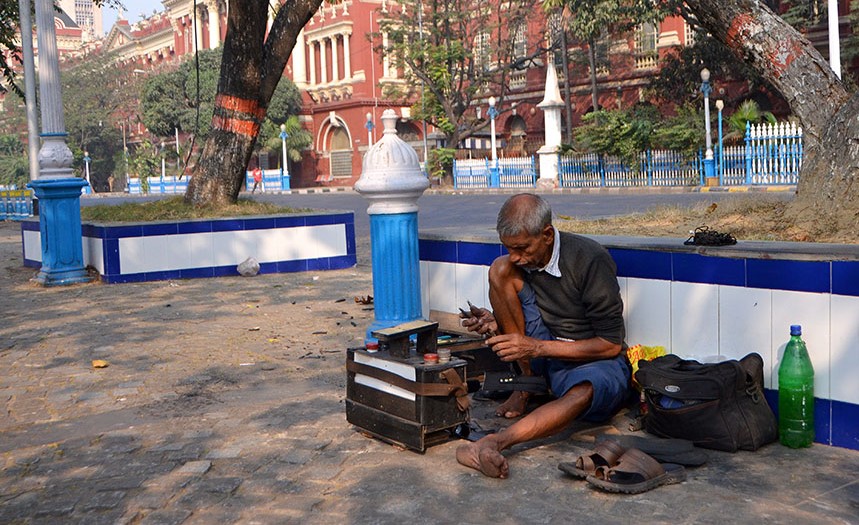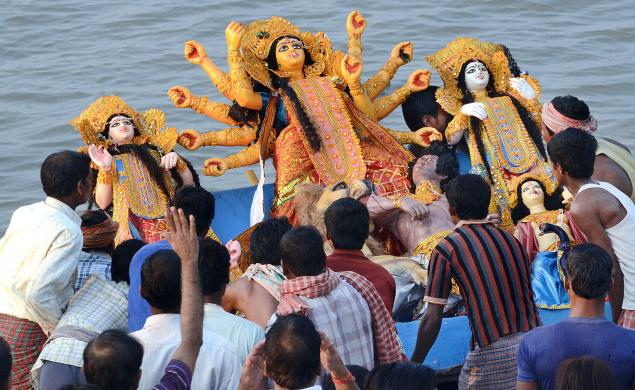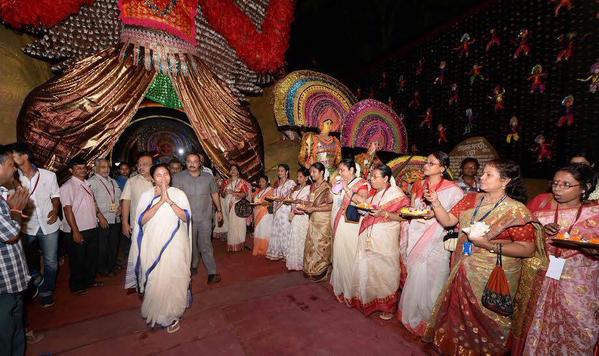Shortly before 1 PM, Mamata Banerjee entered the Raj Bhavan. Earlier in the morning, she had visited the Kalighat temple and took blessings of her mother, now late Gayatri Devi. Alighting at the north gate of the Raj Bhavan, she walked in, amidst cheers and slogans from the people waiting outside in thousands.
At 1.05 PM, Mamata Banerjee took oath as the first woman Chief Minister of West Bengal. History was created.
Mamata Banerjee takes oath as Bengal CM
Mamata Banerjee and her cabinet took oath in the presence of some 3,000 people that included her party workers and relatives of the victims of violence in Nandigram and Singur. This has perhaps been one of the most crowded swearing-in ceremonies of a chief minister. Along with her, 35 MLAs from Trinamool Congress took oath as ministers of the two-tier ministry. Four of the Trinamool Congress MLAs were sworn in as Ministers of State.
Mamata Banerjee takes oath
Clad in a simple white sari and wearing a tricolor uttariya (long scarf) that has by now become her trade mark, Mamata Banerjee took the oath in Bengali in the name of God, which was administered by Governor M.K. Narayanan.
Some hours earlier, Ms Banerjee had set off from her humble Harish Chatterjee Street house on a journey to change Bengal`s course. Thousands of supporters had already lined the route she would take to Raj Bhavan, holding puja thalis and blowing conch shells. Many were barefoot, as if had come to worship a deity.
In Ms Banerjee’s para, the atmosphere was Puja-like. When she emerged from the door, wearing a crisp off-white saree with a blue zari border, a chant of “Didi…Didi” went up. Her car was ready to take her to Raj Bhavan, but the Iron Lady of Bengal walked into the crowd, much to the dismay of her bodyguards from the Special Security Unit. She touched as many hands as she could, smiled, and folded her hands in humility. Someone passed her a microphone.
At exactly 12.55 PM, the Chief Minister-in-waiting walked into Raj Bhavan. She greeted Governor M K Narayanan and took the sheet of paper she was to read from.
The historic march from Raj Bhavan to Writers’
Trailed by a sea of supporters, Mamata Banerjee walked the 1 km from Raj Bhavan, where she took oath as the first non-Left Chief Minister in 34 years, to Writers’ Building on Friday, May 20, 2011. Euphoric, swelling crowds — nearly 2.5 lakh — thronged the kilometre-long road to Writers’ Buildings. “Democracy has to be with the people,” she said. “I saw the crowds and asked the governor’s permission to walk to Writers’ Buildings.”
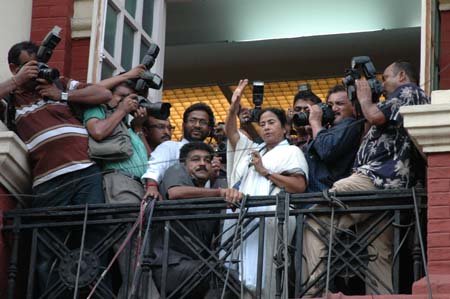
Her first day at Writers’ Building
Bureaucrats and security officers escorted Mamata Banerjee up the same flight of stairs along which she had been dragged down in 1993. In the corridor, she suddenly cut her brisk stride and turned towards a balcony. She stood there for a while and waved to the delirious crowd. A bodyguard swiftly crouched before her, hanging on to the low guard rails to protect her from the mad scramble of photojournalists. With a final wave, Ms Banerjee walked off purposefully to the CM`s chamber. It was 4.44pm.
It was from there that Ms Banerjee had been hauled out 17 years ago. Then a firebrand Congress worker, she had been agitating outside former CM Jyoti Basu’s office, insisting he meet a woman who had been allegedly raped by CPM workers. As the police yanked her out, Banerjee swore to set foot in Writers’ Buildings only after the Left was ousted. On the afternoon of 20 May, she kept her vow.
The first Cabinet Meeting
On her first days as chief minister, the people’s leader broke all protocol. She refused a bullet-proof car, declined the privilege of free passage, instructed police to halt her black car at traffic signals, worked in office until 12.35 AM the day she was sworn in.
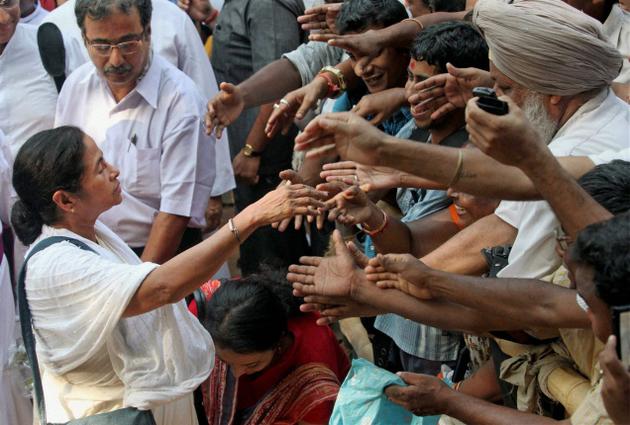
People greet Mamata Banerjee on 20 May, 2011
After the swearing-in, Mamata Banerjee chaired her first Cabinet meeting at around 5 PM: Singur topped the agenda, then came her first press conference as CM around 8 PM. Then she sat in her office, allotting ministries to her Cabinet colleagues. The CM left office at 12:35 AM on Saturday.

